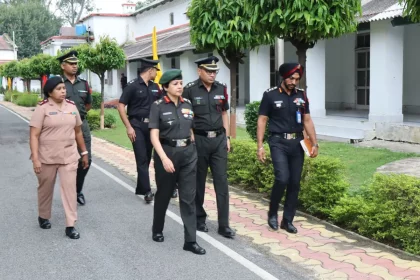Lt Gen Dhiraj Seth Reviewed Diamond Jubilee Passing Out Parade at NCC Officers’ Training Academy, Gwalior
131 Lady ANOs Commissioned as NCC Officers, Showcasing Six Decades of Nari Shakti and Youth Leadership.
Lt Gen Pratik Sharma Reviews Counter-Terrorism Operations in South Kashmir
Visit Highlights Success of Operation Guddar, AI-Driven Innovations, and Joint Security Efforts in Kulgam.
2 Assam Rifles Soldiers Martyred in Ambush Near Imphal
Militants Launch Deadly Attack in Nambol, Reinforcements Rushed to the Area.
WARDEC Hosts Joint Conference to Advance AI-Powered Wargaming in Indian Army
Event marks leap in simulation, strategy, and regional defence cooperation.
Army’s Central Command Signs MoU with IIT Ropar to Boost Military Innovation
Lt Gen Anindya Sengupta Leads Landmark Initiative for Avalanche-Resilient and Modular Infrastructure.
Lt Gen Sadhna Saxena Nair Visits Military Hospital Ayodhya, Praises Exemplary Healthcare
The visit concluded with words of encouragement to the hospital staff to keep the AMC flag flying high with pride…






